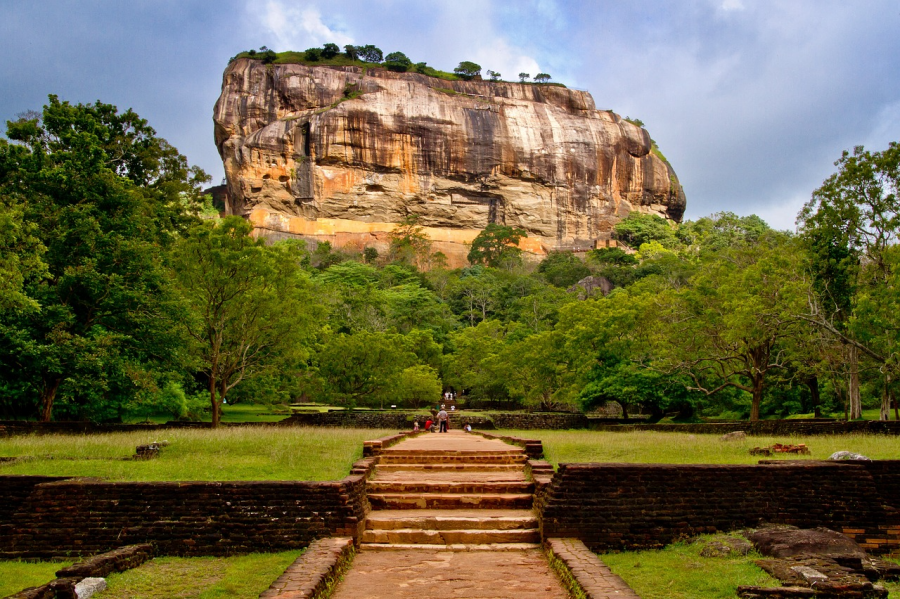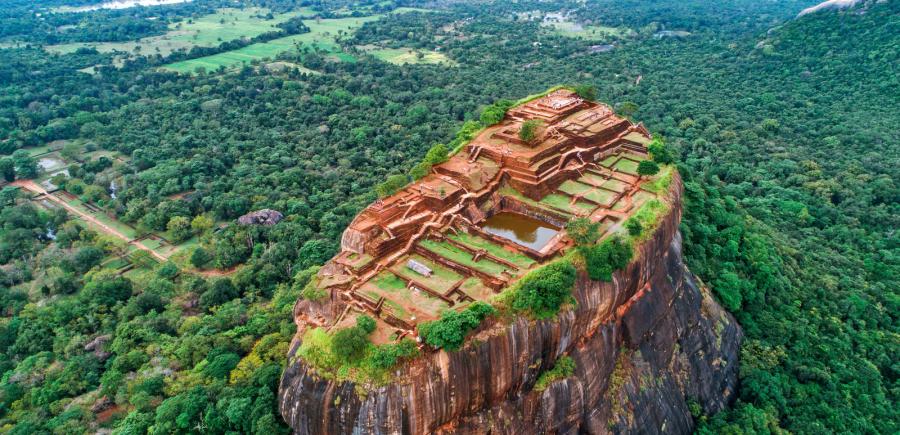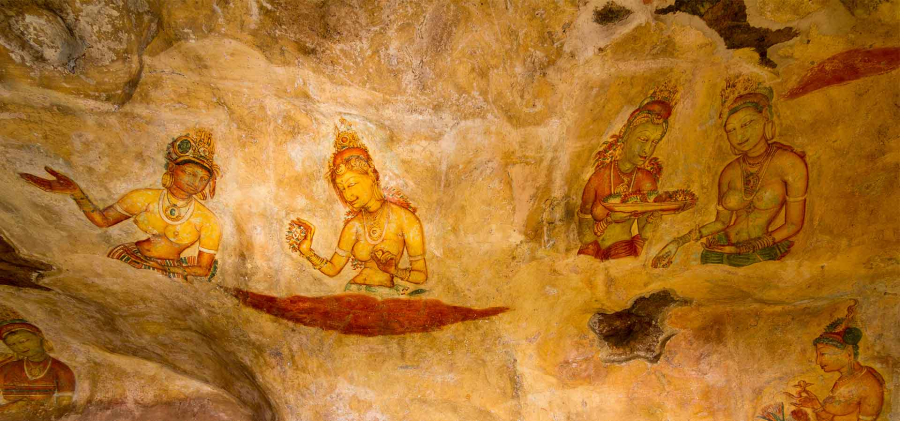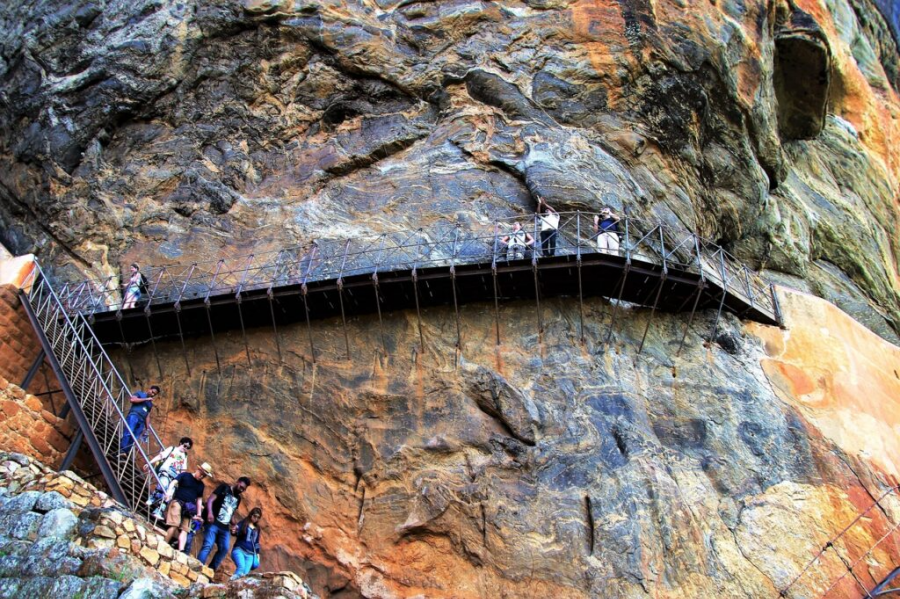

One of Sri Lanka's most important historical sites is Sigiriya. Known as the "Eighth Wonder of the World" by the locals, this historic palace and castle complex is a major archaeological find that draws thousands of visitors each year. It is most likely Sri Lanka's most popular tourist attraction.
Situated on a vast rocky plateau rising 370 metres above sea level, the palace is situated in the centre of the island, sandwiched between Dambulla and Habarane.

The Sigiriya rock plateau rises 200 metres above the surrounding jungles, having been produced by the magma of an extinct volcano. Visitors are astounded by the view's exceptional confluence of human imagination and nature.
The fortress complex is encircled by a large network of defences, vast gardens, ponds, canals, alleys, and fountains, as well as the ruins of a palace.

For several millennia, Sigiriya's neighbouring regions were under siege. The rocky plateau of Sigiriya has been used as a monastery since the third century BC. Here was the royal house built by Kasyapa in the latter part of the 5th century.
Following his passing, Sigiriya was once more converted into a Buddhist monastery before being abandoned in the fourteenth century.
On the northern side of the rock lies the main entrance. The upper portions of the massive stone lion's body were destroyed, but its feet have endured to this day.
This lion is credited for naming the palace Sigiriya. The name Sihagri, which means Lion Rock, is the source of the phrase Sigiriya.
The murals painted during Kasyapa's reign covered nearly the whole western wall of Sigiriya. There are currently eighteen surviving frescoes.
The frescoes, which show naked women, are said to represent either priestesses carrying out religious rites or Kadapa's concubines and spouses. These unusual old paintings honour feminine beauty and have great historical significance, even though it is unknown who the females in the frescoes are.

The stairway that flanks the rock face was once enclosed by the brick wall known as Sigiriya Mirror Wall, which dates back to the fifth century. The wall plaster was polished during the reign of King Kasyapa, giving rise to the name.
Many local tourists were aware of the ruins of the Sigiriya rock fortification after Kasyapa fell. Graffiti on the mirror wall served as a record of their several trips. Poems written in Sinhala are called graffiti. The beauty of Sigiriya damsels is portrayed in this graffitis. A few of the paintings that were described have vanished. These poems are all they have left.


